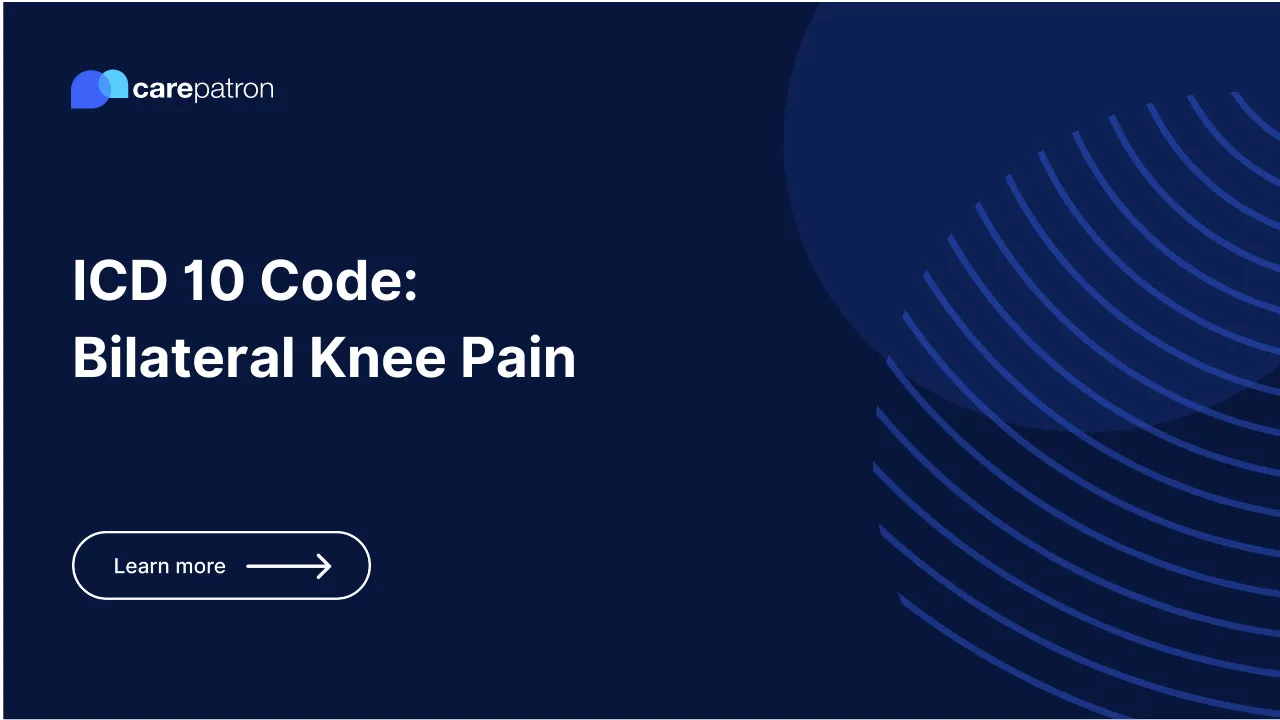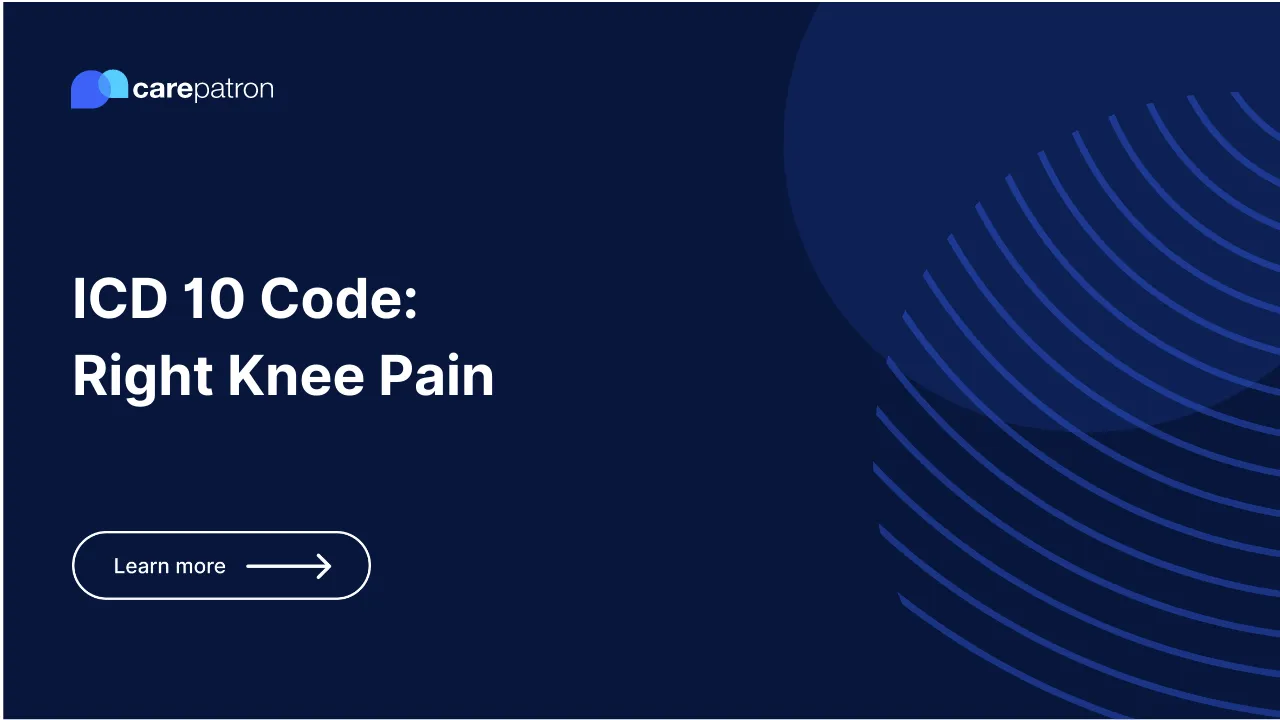Lumbar Spine Stenosis ICD-10-CM Codes
Discover the ICD-10 codes used for lumbar spine stenosis. Learn how these codes help healthcare providers identify, track, and communicate the diagnosis.

What ICD-10 Codes are Used for Lumbar Spine Stenosis
M48.06
The ICD 10 lumbar spine stenosis code M48.06 refers to spinal stenosis in the lumbar region. It provides a general classification for this condition, without specifying the stenosis's severity or the narrowing's exact location. However, it does confirm that the stenosis occurs in the lower back.
M48.061
This is one of the Lumbar Spine Stenosis ICD Codes used to denote spinal stenosis in the lumbar region without neurogenic claudication. Neurogenic claudication is a type of leg pain that arises when walking or standing due to spinal canal narrowing and nerve compression. In this case, the patient does not experience this particular form of pain.
M48.062
This ICD 10 code for lumbar spine stenosis is applied when spinal stenosis occurs in the lumbar region, and the patient experiences neurogenic claudication. The pain level can vary from mild to severe, and the condition may manifest additional symptoms such as numbness, tingling, and leg weakness.
M48.07
This code, M48.07, is utilized to indicate spinal stenosis in the lumbosacral region, which encompasses the area between the lumbar spine and the sacrum. The sacrum is the triangular bone located at the base of the spine.
M99.63
The ICD 10 code for neural foraminal stenosis of lumbar spine is M99.63, indicating stenosis in the neural foramen, through which spinal nerves exit the spine. Causes include degenerative changes (intervertebral disc degeneration, bone spurs, ligament thickening), congenital abnormalities, and trauma (e.g., car accidents or falls).
Yes, the codes above are billable by insurance companies and other payers. They are used to identify the diagnosis of lumbar spine stenosis and determine the reimbursement level for medical services related to the condition.
Clinical Information
- Lumbar spine stenosis is a narrowing of the spinal canal in the lower back, causing pressure on the spinal cord and nerves, leading to pain, numbness, and weakness in the legs.
- Causes include degenerative changes in the spine (e.g., degenerated intervertebral discs, bone spurs, ligament thickening), congenital abnormalities, and trauma (e.g., car accidents, falls).
- Symptoms can vary and may involve lower back pain (dull, aching, or sharp) exacerbated by standing, walking, or sitting, numbness and tingling in the legs (particularly in the feet and toes), weakness in the legs affecting mobility, and neurogenic claudication (leg pain while walking or standing, relieved by sitting or bending forward).
- Diagnosis is based on medical history, physical examination, and imaging tests such as X-rays, MRI, and CT scans.
- Non-surgical treatment options include physical therapy, stretching exercises, medications (NSAIDs, muscle relaxants), and epidural steroid injections to reduce inflammation and pain.
- Surgical treatment is considered for severe cases unresponsive to non-surgical approaches. The specific surgery type depends on the location and severity of stenosis.
Commonly asked questions
A lumbar spine stenosis ICD 10 code identifies and communicates the diagnosis in medical records and billing systems. It helps healthcare providers track the prevalence of the condition and determine reimbursement levels for related medical services.
Common treatments for lumbar spine stenosis include non-surgical options like physical therapy, stretching, medications (NSAIDs, muscle relaxants), and epidural steroid injections. Surgical treatment is considered for severe cases that do not improve with non-surgical methods, with the specific procedure based on the location and severity of the stenosis.
A diagnosis code for lumbar spine stenosis signifies the identification of the condition in medical records and billing systems. It includes information about the location and severity of the stenosis, facilitating effective communication between healthcare providers and assisting in determining reimbursement levels for related medical services.


.png)




.webp)
.webp)
.webp)
.webp)
.webp)
.webp)
.webp)
.webp)
.webp)
.webp)
.webp)
.webp)
.webp)
.webp)
.webp)
.webp)
.webp)
.webp)
%2520(1).webp)
.webp)
.webp)
.webp)
.webp)
.webp)
.webp)
.webp)
.webp)
.webp)
.webp)
.webp)
.webp)
.webp)
.webp)
.webp)
%2520(1).webp)
.webp)
.webp)
.webp)
.webp)
.webp)
.webp)
.webp)
.webp)
.webp)
.webp)
.webp)
.webp)
.webp)
.webp)
.webp)
.webp)
.webp)
.webp)
.webp)
.webp)
.webp)
.webp)
.webp)
.webp)
.webp)
.webp)
.webp)
.webp)
.webp)
.webp)
.webp)
.webp)
.webp)

.webp)
.webp)
.webp)
.webp)
.webp)













.webp)
.webp)




.webp)


